When I was first introduced to the Doberman breed, I had no idea that there were two main variants of Doberman—the American Doberman Pinscher and the European Doberman (or just “Dobermann”). Once I learned this, I realized I had no idea of the differences between the two or which one would be best for my family. If this is you, then you’re in luck, I’ll give you a crash course on all the differences between these two dogs. This took me years to learn on my own!
What’s the difference between an American and European Doberman? The main differences are that an American Doberman Pinscher is a sleek, elegant, show dog that possesses an ideal temperament for use as a family pet, while the European Doberman is a slightly larger, more muscular dog with a high drive and a temperament better suited for use as a working dog.
The differences certainly go a bit deeper than that, however, and there are certainly very good reasons why the Doberman breed has split into these two variations. While the two breeds might look very similar to someone who isn’t familiar with Dobermans, with some practice you’ll be able to spot a European Dobermann versus an American Doberman Pinscher fairly quickly. There are also significant temperament differences between the two that you should be aware of.
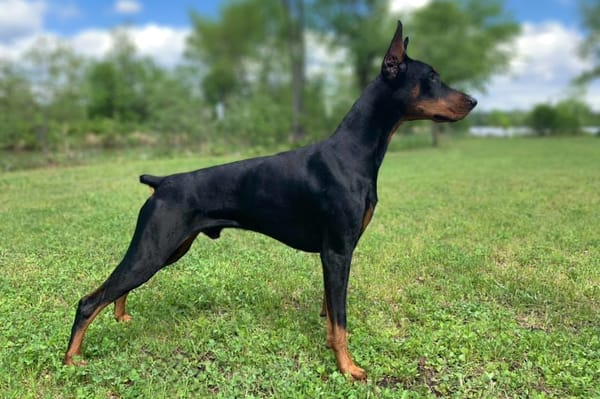
American Doberman
Overview
Height: 26 – 28 inches (male), 24 – 26 inches (female)
Weight: 75 – 100 lbs (male), 60 – 80 lbs (female)
Price: $1500 – $2500
Lifespan: 10 – 13 Years
Colors: Black, red, blue or fawn (Isabella)
Markings: Light rust colored—often with a small white patch on chest.
Temperament: Intelligent, loving, in tune with owner’s emotions, ideal family dog.
Physical Traits
Overall Build: Longer refined body, thin, elegant and toned show dog build. Thinner bone structure.
Head: Thinner wedge-shaped head with thinner muzzle and jaw.
Eyes: Lighter brown.
Neck: Longer and thinner—rises sharply at the shoulder.
Chest: Smaller, narrow chest.
Body: Long and lean.
Legs: Thinner, more elegant.
Feet: Smaller refined structure.
Temperament
- Alert, loyal, loving, and protective.
- Less likely to be physically protective.
- More in tune with human emotions.
- Loves beds and sofas—readily shares personal space.
- Calmer, with slightly fewer exercise requirements.
- Excels as a family dog.
- Responds well to positive reinforcement and is more sensitive to physical correction.
- May need reassurance in new or unusual surroundings.
- When family is threatened, may react with barking and some physical intervention. May occasionally retreat.
- Likely to be successful in AKC conformation shows—not likely to be successful in working events.
Complete Breed Standard: AKC Doberman Pinscher Standard
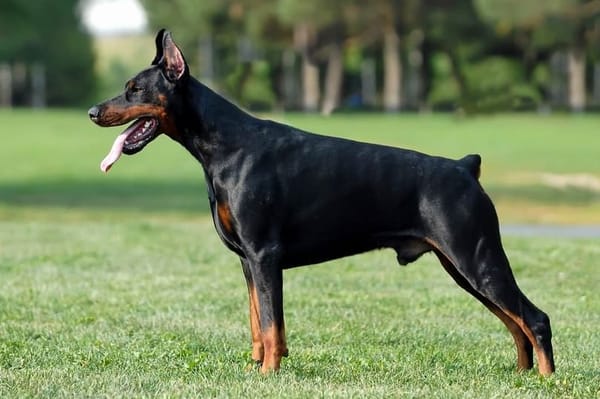
European Doberman
Overview
Height: 27 – 28 inches (male), 25 – 27 inches (female)
Weight: 80 – 105 lbs (male), 65 – 85 lbs (female)
Price: $2500 – $3500 (less in Europe)
Lifespan: 10 – 13 Years
Colors: Black or red (brown)
Markings: Dark rust colored—with no white patch on chest.
Temperament: Intelligent, loving, confident, ideal working dog.
Physical Traits
Overall Build: Thicker, more compact, body and a more muscular working dog type build. Thicker bone structure.
Head: Broader head with thicker muzzle and jaw structure.
Eyes: Darker brown.
Neck: Shorter and thicker—less rise from the shoulder.
Chest: Larger, broad chest.
Body: Compact and muscular.
Legs: Thicker, more muscular.
Feet: Larger compact structure.
Temperament
- Alert, loyal, loving, assertive, and protective.
- More likely to be physically protective.
- In tune with human emotions.
- Loves beds and sofas—but may be a space hog.
- High stamina, drive, and exercise requirements.
- Excels as a working dog.
- Responds well to strong direction and less sensitive to physical correction.
- Confident when exposed to new or unusual surroundings.
- When its family is threatened, may react with barking and physical intervention. Rarely retreats.
- Likely to be successful in working events—not likely to be successful in AKC conformation shows.
Complete Breed Standard: FCI Dobermann Standard
To figure out what genetic influences your dog has, including where it’s ancestors came from and if there are any other genetic influences besides pure Doberman in their past, check out my Doberman DNA Testing Guide here which will help you do a simple test at home to answer your questions!
Video: How to Choose Which One is Best for You
Doberman Buyer’s Guide: Take a look at my guide for selecting the right type of Doberman (here) which will walk you through how to select the best type of Doberman for your specific situation!
Physical Differences
The most obvious difference between the two varieties of Doberman is in their physical build. This is also what will allow you to quickly and easily identify the specific variation of Doberman. Although each dog will differ slightly based on its individual genetics, the following are the primary physical differences between the two.
The height and weights listed below are per the breed standard for the American Doberman Pinscher as described by the AKC standard and the European Dobermann as described by the FCI standard. The weights listed in the side by side comparison above are real-world weights that you are likely to see for each type of dog (and are not based on the breed standards). You’ll note that the AKC sets a very broad range on the acceptable weights of the American Doberman while the FCI sets a very tight weight range. Regardless, the European dog is almost always heavier than its American counterpart.
American Doberman Pinscher
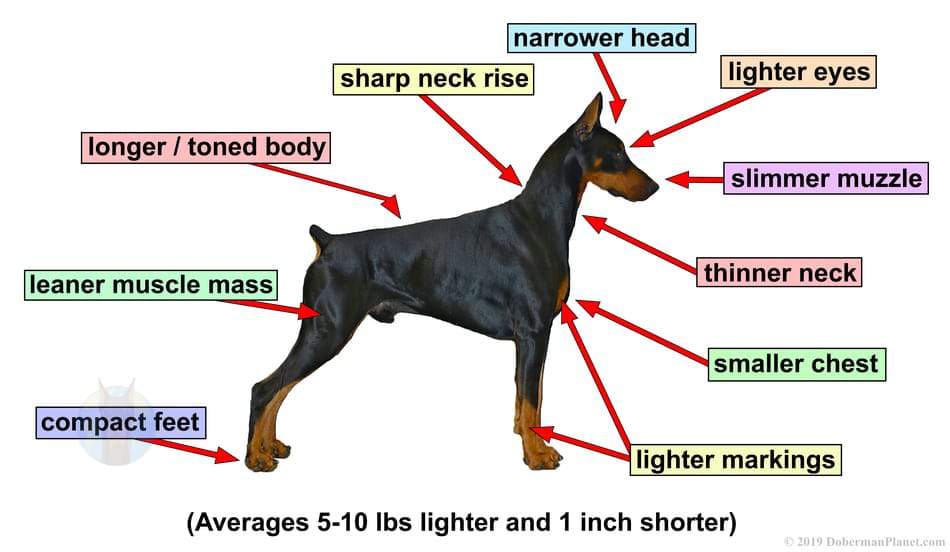
The American Doberman Pinscher is a more elegant dog that is built to excel in the show ring. The overall look of the American Doberman is that of a longer, slimmer, and sleek looking dog. Think of the build of a high-endurance athlete.
Their legs are long and slim, their paws are smaller, and the head is a slim wedge shape with smooth angles. The muzzle is also long, slim, and come to more of a sharper point than the European variety. The overall body is also noticeably longer and thinner.
The following is the height and weights for the American Doberman Pinscher as outlined in the AKC breed standard.
- Height: 26 – 28 inches (males) or 24 – 26 inches (females)
- Weight: 75 – 100 pounds (males) or 60 – 90 pounds (females)
Probably the easiest physical characteristic to spot from a distance is the neck. On an American Doberman Pinscher, the neck will slope quickly upwards from the shoulders of the dog with a graceful sloping arch. The neck widens gradually towards the body. The neck is also significantly longer and thinner than its European counterpart.
European Dobermann
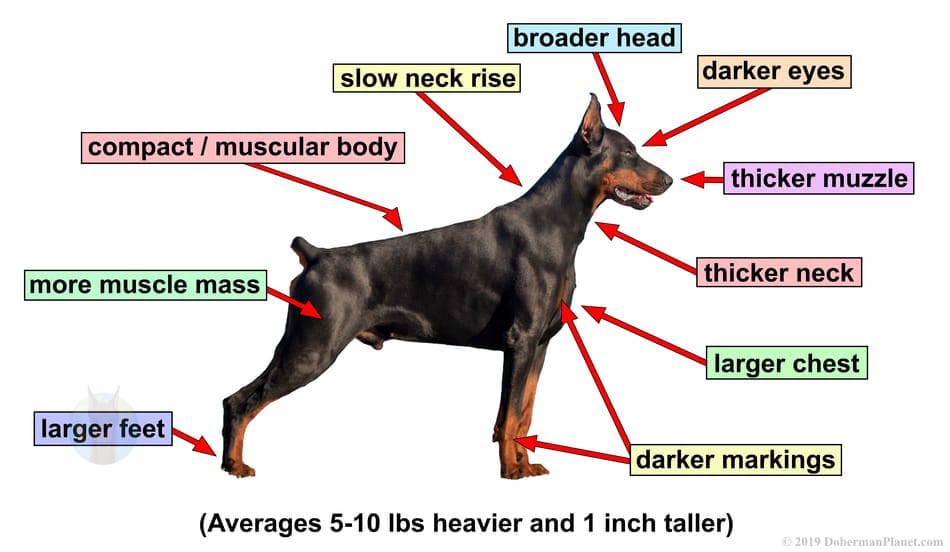
The European Dobermann is an overall larger dog that is built to excel as a working or personal protection dog. Overall, the European Dobermann is a larger, heavier, dog with a thicker bone structure. The dog is more compact and not as long as the American version.
Their legs are thick and muscular, paws are larger, and their head is a thicker block-shape with sharper angles. The muzzle of the European Dobermann is thicker and blunter at the end than the American variety.
The following is the height and weights for the European Dobermann as outlined in the FCI breed standard.
- Height: 27 – 28 inches (males) or 25 – 27 inches (females)
- Weight: 88 – 99 pounds (males) or 71 – 77 pounds (females)
Again, the differences in the necks of the dogs are the most apparent. The neck of the European Dobermann is thicker, shorter, and protrudes out from the shoulders with less of a noticeable upward arch.
The European Convention makes it illegal to crop the ears of all dogs and dock the tails of the majority of dog breeds. That means you likely won’t see European Dobermans, living in Europe, that have cropped ears. Some European countries haven’t adopted the European Convention, however, and therefore owners may still choose to crop their ears in most of those countries.
Color Differences
While the differences in color between the two Doberman variants are not as noticeable as the other physical differences, they can certainly be easily observed when the two dogs are side by side. The biggest difference is that the European version has more pigment than the American variety resulting in darker, deeper colors.
There are six known colors of Doberman to exist, however, not all colors are recognized as a “breed standard” by their respective kennel clubs. For a more in-depth examination of all the different Doberman colors (including pictures), see my article, All the Colors and Types of the Doberman Pinscher.
American Doberman Pinscher
The American Doberman has the same possible colors as the European, however, the American Kennel Club (AKC) recognizes the following colors as being standard colors for the breed:
- Black and Rust
- Red and Rust
- Blue and Rust
- Fawn (Isabella) and Rust
The markings on the coat of the American Doberman consists of sharply defined rust-colored areas that are lighter in color than the European. The rust markings appear above each eye, on the muzzle, throat, and chest. They also appear on the legs, feet, and just below tail—the same as the European variety. However, the American may have a small white patch appear on the chest area (not to exceed one-half square inch in size), something that isn’t present on the European Dobermann.
The eye color is generally a lighter brown color than that of the European Dobermann, although there are some variations in the color of the eye.
European Dobermann
The European Dobermann can have many variations of their color just as the American Doberman does. The most notable regulatory organization for the European Dobermann, the Federation Cynologique Internationale (FCI) only recognizes the following colors as being the standard for the breed:
- Black and Rust
- Red and Rust (aka “Brown and Rust”)
Any dogs that are not of these two colors are not recognized by the FCI and cannot be certified by them or approved for breeding.
The markings on the European Dobermann are also sharply defined rust-colored markings above each eye, on the muzzle, throat, chest, legs, feet, and just below the tail. Although the European Dobermann’s markings are a darker rust color than the American variety. Also, the small white patch on the chest is not present.
The eye color of the European Dobermann is also a darker brown than the American variety, although some variation in eye color of the individual dog does exist.
NOTE
Like with people, every dog is different and possesses a unique genetic makeup. Therefore it’s common to see variations in temperamental and physical traits. This is true of any Doberman—American or European.
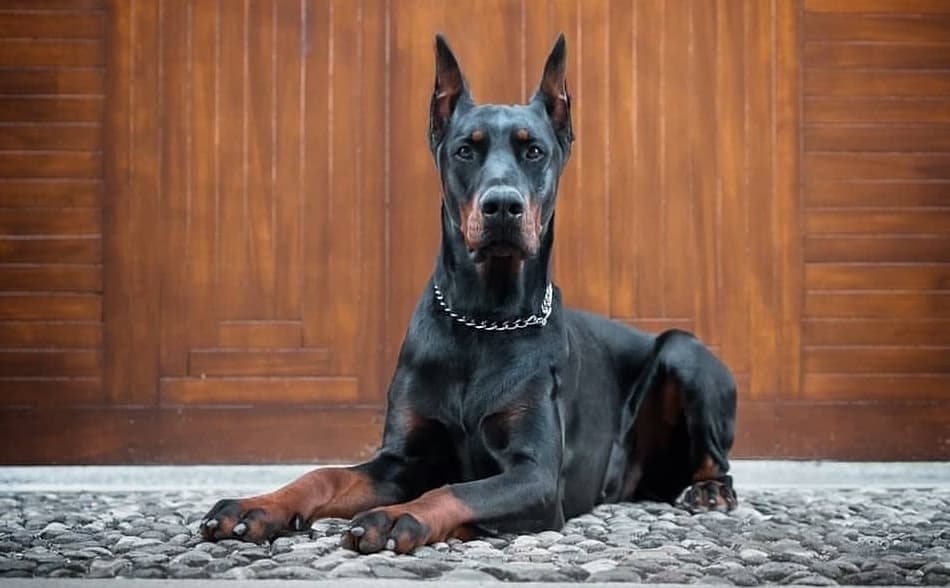
Behavior Comparison
In July of 2021, Doberman Planet conducted an extensive survey of experienced Doberman owners who had first-hand experience owning both American and European Dobermans. Through our search, we located 82 real-world owners who have experience owning both varieties of Doberman and had each of them complete a detailed survey comparing their behaviors. This information was compiled to provide amazing insight into the differences in how these two varieties of Dobermans behave.
The complete results can be found here: American/European Doberman Behavior Survey Results (PDF)
Legal Notice: The information below is the product of original research performed, compiled, and calculated by Doberman Planet LLC. This research is copyrighted and only intended for use on DobermanPlanet.com. All rights reserved. We will protect our original work and aggressively pursue legal action as necessary to do so.
Assertiveness
The assertiveness of both the American and European Dobermans was rated on a scale of 1 to 10 by owners who had both of these dogs. One being “very shy” at all and 10 being “very assertive”.
American

European
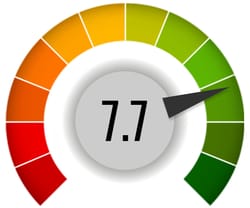
As you can see, while both Dobermans are certainly on the assertive side, the European Doberman was rated as a 7.7 out of 10 by those who have owned both varieties of Doberman. Whereas the American came in at 6.6. This is a significant difference. The European Doberman is more assertive and direct than the American Doberman. The European is known for asserting themselves when they want attention, something to eat, or are wary of a situation.
Training Style
The most effective training style for each type of Doberman was rated by owners on a scale of 1 to 10. With a rating of one being “positive reinforcement only”, 5 being “a mix of both”, and 10 being “firm direction only”.
American

European
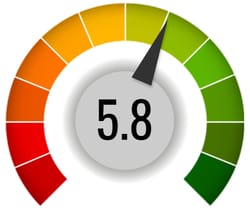
The training style that seems the most effective for each type of dog is an incredibly important thing to know. All Dobermans seem to respond best to a mix of positive reinforcement and firm direction during training. But there are some differences. The American Doberman prefers a softer approach to training with frequent positive reinforcement while the European Doberman needs clear, firm direction during training.
Age at Mental Maturity
At what age each type of Doberman reaches a noticeable stage of mental maturity was also scored by owners who have owned both American and European Dobermans. This is the age when the dog noticeable “calms down” and seems to be past their high-energy puppy stage and enter into the stereotypical stoic Doberman stage.
American
| Age at Maturity | % of Dogs |
|---|---|
| 1 Year of Age | 18.2% |
| 2 Years of Age | 43.6% |
| 3 Years of Age | 12.7% |
| 4 Years of Age | 12.7% |
| 5 Years of Age | 9.1% |
| Over 5 Years of Age | 3.6% |
European
| Age at Maturity | % of Dogs |
|---|---|
| 1 Year of Age | 22.2% |
| 2 Years of Age | 36.1% |
| 3 Years of Age | 25% |
| 4 Years of Age | 2.8% |
| 5 Years of Age | 5.6% |
| Over 5 Years of Age | 8.3% |
The interesting thing here with this data is that Dobermans are thought as a whole, to reach that mental maturity by the age of two. According to this information:
- 61.8% of American Dobermans reach mental maturity by 2 years of age.
- 58.3% of European Dobermans reach mental maturity by 2 years of age.
Therefore you can conclude that American Doberman Pinschers tend to hit mental maturity earlier than European Dobermans. Although to be fair, the difference between them is quite small. It’s also interesting to see that a much larger percentage of European Dobermans didn’t hit that maturity level until after 5 years of age as compared to Americans.
Energy Levels
How energetic each type of Doberman is on an average day was also scored by owners on a scale of 1 to 10. A score of one was “very lazy (doesn’t need must exercise)” and a score of 10 was “tons of energy all day long (needs lots of exercise).”
American

European

How much energy a dog has is one of the top things for new owners to take into account when deciding if a breed is right for them. This can be very telling of how much time and dedication will be needed from you to keep your Doberman happy. A European Doberman will need significantly more exercise throughout the day than an American Doberman will.
The European Doberman scored a 7.7, significantly higher than the American Doberman as 6.2, indicating that they will need much more attention in terms of activities and exercise from their owners on a daily basis.
Acceptance of Strangers
How accepting each variety of Doberman was towards strangers who were brought into their homes was also rated in this survey. This was also a scale of 1 to 10, with one being “very accepting” and ten being “very suspicious”.
American
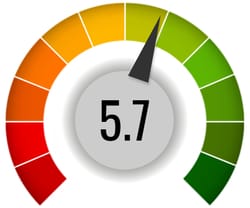
European

This section was a dead tie between both the American and European Doberman with both dogs having a slight bias towards suspicion of strangers at a score of 5.7, which of course rings true to the Doberman breed as a whole. While the European Doberman is often more confident than the American Doberman, both dogs are protective of their homes and often suspicious of strangers.
Of course, this behavior will vary greatly from dog to dog based heavily on factors such as how much socialization they receive during the “critical socialization window” of their development for example.
Behavior in New Surroundings
Owners of both American and European Dobermans also rated each of their dogs on how they behave in new or unusual surroundings. There were three options to describe how their dog behaves, see tables below.
American
| Behavior in New Surroundings | % of Dogs |
|---|---|
| Sticks close to your side, never leaving. | 45.9% |
| Checks in with you often, but explores. | 48.6% |
| Leaves frequently and rarely checks in. | 5.4% |
European
| Behavior in New Surroundings | % of Dogs |
|---|---|
| Sticks close to your side, never leaving. | 22.1% |
| Checks in with you often, but explores. | 61% |
| Leaves frequently and rarely checks in. | 16.9% |
It’s extremely interesting how well you can see the confidence of the European Doberman here as compared to the American Doberman. Traditionally the European has always been described as being more sure of themselves in new situations and this data certainly backs that up. American Dobermans are less likely to stray far from their owners in new surroundings than European Dobermans.
Only about 22% of European Dobermans will stick close to your side and never leave in a new situation whereas almost 46% of American Dobermans will. Remember that the most common reasons for sticking close to their owner’s side in a new situation specifically is fear, lack of confidence, or protectiveness.
In-Tune with Owner’s Emotions
How in-tune each dog seems with its owner’s emotions was also rated on a scale of 1 to 10. With a score of one being “not in-tune at all” and 10 being “very in-tune with my every emotion.”
American
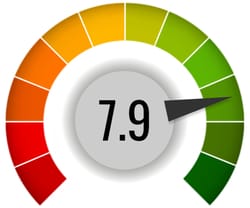
European

Both varieties of dogs came in very close here, at 7.9 for the American Doberman and 7.4 for the European. Notice that both dogs are very in-tune with their owners which is a great feature of this breed, although the American is a bit more so. The American Doberman Pinscher tends to be more in tune with its owner’s emotions as compared to the European Doberman.
This makes things like bonding with and training your dog much easier. It also helps with the dog’s original purpose as a protection dog as they can easily “read” when their owners are uncomfortable in a certain situation and react accordingly.
Bonding with Family
Who a dog bonds with is also a critical piece of information to know for a new dog owner as it’ll give a glimpse into daily life with that dog. In this question, owners of these two varieties were asked about who the dog bonds most to, an individual, or the whole family.
American
| Bonding Tendencies | % of Dogs |
|---|---|
| Bonds equally to the whole family. | 44.6% |
| Bonds tighter to one person. | 54.1% |
| I don’t know. | 1.4% |
European
| Bonding Tendencies | % of Dogs |
|---|---|
| Bonds equally to the whole family. | 36.4% |
| Bonds tighter to one person. | 59.7% |
| I don’t know. | 3.9% |
This is another area where the differences between the American and European Dobermans are a bit difficult to see. You can see that Dobermans in general like to bond with one person overall. However, from this data, you could conclude that American Dobermans are more likely to bond to the whole family equally than European Dobermans are. Similarly, European Dobermans tend to bond tighter to one person more than American Dobermans.
Off-Leash Behavior
The behavior of European and American Dobermans while off-leash was also examined in this survey of experienced owners. Many Doberman owners love taking their dogs off-leash so knowing how each variety will act is incredibly important to those people.
American
| Behavior | % of Dogs |
|---|---|
| Trustworthy and responds to commands off-leash. | 43.2% |
| Doesn’t always listen while off-leash. | 29.7% |
| We never go off-leash. | 27% |
European
| Behavior | % of Dogs |
|---|---|
| Trustworthy and responds to commands off-leash. | 36.4% |
| Doesn’t always listen while off-leash. | 28.6% |
| We never go off-leash. | 35.1% |
American Doberman Pinschers are known to be more in-tune with their owners than European Dobermans which may explain some of these results. You can see from this data it appears that American Doberman Pinschers tend to be better off-leash dogs as compared to European Dobermans. They respond to commands more consistently and are more frequently trusted to be off-leash by their owners.
Although obviously other factors such as training and the dog’s individual genetics plays a major role here as well. It does make sense though that the head-strong European Doberman might be more likely to have some issues off-leash. I would suspect that these incidents have more to do with the stubbornness of the European variety than their abilities to be trained off-leash.
Summary of Behavior Differences
These dogs are similar in many ways as far as temperament—after all, they came from the same ancestors of Louis Dobermann’s creation. Both dogs are highly intelligent, easily trainable, loving, alert, protective, and loyal family companions. Both are very in-tune with their family (or “pack”) and both are happiest in an active household.
American Doberman Pinscher
When asked to pick a few phrases to describe their American Doberman, owners with experience raising both American and European Dobermans most often chose the words:
- Loving
- Protective
- Easy to train
- Good with kids
- Trustworthy while alone.
The American Doberman is considered to be an ideal family pet. They’re slightly calmer than their European counterparts with a bit less drive. Which can be great for a family since Dobermans, in general, have an extraordinarily high level of drive. Like the European, the American dog loves relaxing on the bed or couch, but the American variety is more comfortable sharing his personal space and more likely to cling to their owners.
The American responds very well to training that consists of positive reinforcement and soft corrections along the way. They thrive on reassurance from their owners and are more sensitive to human emotions. They’re cautious in unfamiliar surroundings and are generally a bit more “careful” with their behavior depending on the circumstances and their surroundings.
The American Doberman is protective of their family much like the European. If their family is threatened, however, they may be more cautious with their reaction as well. Their level of intervention will likely include barking and possibly physical intervention. On occasion, the dog may retreat. Overall, the American Doberman is great for a broader audience and less experienced dog owners.
European Dobermann
When asked to pick a few phrases to describe their European Doberman, owners with experience raising both types of Doberman most often chose the words:
- Loving
- Protective
- High-energy
- Confident
- Alert
The European variety can also be a great family pet, however, they excel as a working dog. This means that they’re ideally suited for police, military, search and rescue, and other similar types of work. The European Dobermann has a very high level of drive and determination. They also have higher exercise requirements to keep them happy throughout the day than their American counterparts. The European loves time spent on the couch or bed with its owners as well, but is more likely to be a bit of a “space hog”.
The European Dobermann generally needs clearer and firmer direction to be successful with their training. They can be considered a bit more “headstrong” than the American variety. They’re generally confident and not phased in chaotic environments and will behave the same regardless of their surroundings.
If their family is threatened, the European variety is more likely to have a reaction that involves physical intervention. They’re less likely to retreat than the American Doberman. Overall, the European Dobermann is a bit tougher to handle for the inexperienced dog owner but can certainly thrive with clear and concise training.
Health Differences
Information and studies regarding the health differences between the two breeds are few and far between. Both the American and European Doberman are prone to the same list of health issues including; Gastric dilatation and volvulus syndrome (GDV or Bloat), hip dysplasia, dilated cardiomyopathy (DCM), chronic active hepatitis (CAH), von Willebrand’s disease (vWD), cervical vertebral instability (Wobbler Syndrome), progressive retinal atrophy (PRA), hypothyroidism, and osteosarcoma (bone cancer).
Traditionally it has been thought that European Dobermanns are not as likely to be affected by genetic diseases as the American variety, however, this attitude is starting to change as health issues with the European dogs seems to have increased in recent years.
American Doberman Pinscher
The American Doberman Pinscher comes with the same laundry list of potential health issues as the European. However, in America, health testing of puppies (and potential breeding partners) is much more common and inexpensive.
There was one study on the matter however, that looked at a very common issue with both varieties of Doberman, dilated cardiomyopathy (DCM or just “enlarged heart”). The study concluded that rates of DCM were much lower in American Dobermans than in Europeans (source).
European Dobermann
As mentioned earlier, the European Dobermann is susceptible to the same list of health issues as the American version. However, DCM is a growing issue in Europeans and the same study concluded that 58% of European Dobermanns will develop DCM in their lifetimes—a much higher rate than in American Doberman Pinschers (source).
Genetic health testing of dogs in Europe is far less common and much more expensive. Some will argue that this is because European Dobermans are less prone to genetic defects as compared to the American dogs and the breeding pool is larger, therefore health testing isn’t necessary. However, this issue is certainly not resolved and is vigorously debated on both sides.
Puppy Price Differences
Puppy prices from reputable breeders will vary dramatically based on bloodline, breeder reputation, genetic testing that’s been done, how many vaccines have been given, if ear cropping has been performed, and if the breeder considers the dog to be “pet quality” or “show quality”, with the latter being much more expensive.
| Variety | Price Range |
|---|---|
| American Doberman Puppy | $1500 – $2500 |
| European Doberman Puppy | $2500 – $3500 |
For a more in-depth explanation, see the article I wrote all about Doberman puppy prices (for both European and American puppies).
American Doberman Pinscher
The average price for an American Doberman Pinscher is between $1500 and $2500 in the United States. The lower end of that range will be for a “pet quality” Doberman and the higher end for a “show quality” Doberman. All this means is that the show-quality dogs have been examined by an expert and determined to have desirable physical traits that will make them competitive in breed conformation shows.
European Dobermann
The average price for a European Dobermann, purchased in the United States, is between $2500 and $3500. Since European Dobermanns are less common in the U.S., they command higher prices.
However, a European Dobermann purchased in Europe will be significantly cheaper since they are more common. The price range for a Dobermann in most European countries is between $500 and $2000. Russia, Ukraine, and Poland have reputations for having inexpensive Dobermanns near the bottom of this price range.
Many owners will go out of their way to purchase Dobermanns directly from Europe since it’s believed that European breeders send their less desirable dogs to the U.S. for breeding there, while their best dogs stay in Europe to be bred. If you live in the United States and do buy a Doberman directly from Europe, you’ll likely pay around $250 to fly home with your new dog should you decide to pick him or her up in person, or $800 to have it shipped back.
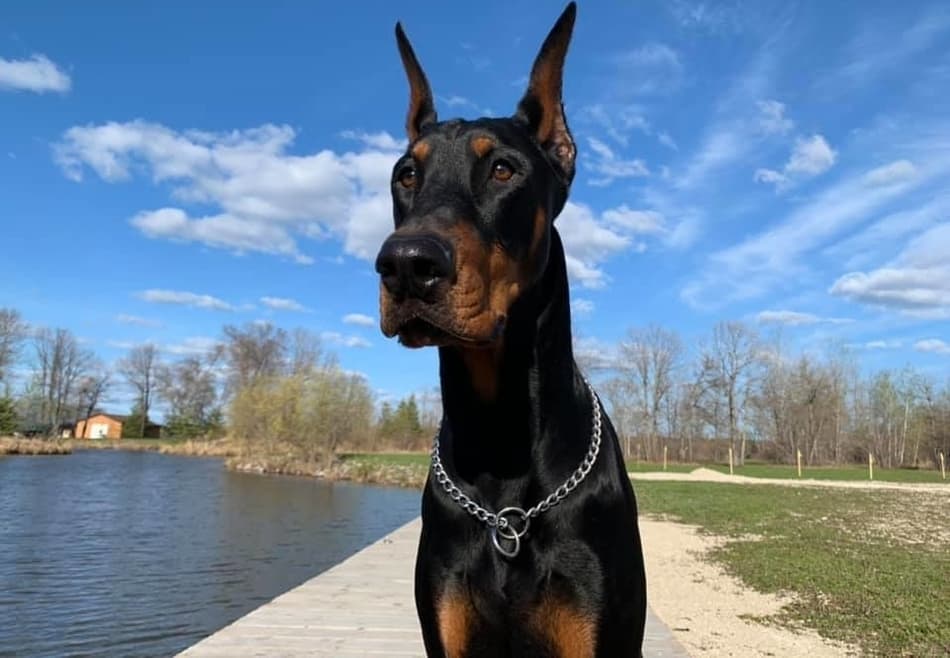
Breeding Regulation Differences
Breeding a Doberman in Europe is certainly a much different experience than in America. In Europe, laws and regulations exist surrounding the breeding of Dobermans where in America, the free market has a bigger role in driving what the breeders produce.
American Doberman Pinscher
In America, there are no laws surrounding the breeding of Dobermans, and anyone is free to do so without regulation. This is more of a free market way of progressing the breed than in Europe, which certainly has its downsides.
There are no requirements or tests to pass to breed a dog in the United States. Even registering your dog with the American Kennel Club (AKC) is very easy to do. Your dog merely has to be the offspring of AKC registered parents and certification can be obtained online with a simple fee. No inspection of the dog is required.
American Doberman Pinschers are much more likely to be successful in breed conformation shows but less likely to be successful in working dog events such as Schutzhund/IPO.
European Dobermann
In Europe, you are legally not permitted to breed a Doberman unless that dog has passed ZTP testing which is a standardized series of temperament tests. The ZTP tests are designed to gauge the self-assurance, stability, nervous disposition, natural drives, and protective instincts of the dog.
Among many other tests, the dog is tested by being placed in chaotic environments and in a situation where physical protection of the owner is necessary. If the dog fails to perform in these tests, it will not get ZTP certification and you will be unable to breed the dog.
Also, Doberman puppies in Europe are considered to be more valuable if their parents have successfully competed in working dog events such as Schutzhund/IPO. These working dog events are focused on the dog’s tracking, obedience, and protection qualities.
European Dobermanns are unlikely to be successful in breed conformation shows but more likely to excel in working dog events (Schutzhund/IPO).
The American vs. European Doberman Controversy
The main reasoning for the differences in the two variants is the differences between breeding dogs in Europe versus in America. In fact, the different regulations and motivations behind breeding the Doberman in these two areas of the world have gone on for so long, that it has resulted in the two dogs possessing many different traits from one another—both in disposition and physical characteristics. Many argue that the Doberman breed should be split into two entirely different breeds.
There is a lot of controversy surrounding both of these Doberman variants and there are certainly passionate people on both sides claiming that their Doberman type is “the best”. I will present the common arguments of both sides below.
American Doberman Pinscher
The predominant kennel club in the United States, the American Kennel Club (AKC) judges dogs primarily on looks, or “conformation”. So dogs that have won titles at AKC shows have primarily displayed exceptional physical characteristics in the show ring (as opposed to ideal temperamental traits).
Since puppies that are the offspring of “AKC Title Holders” are highly desirable and fetch higher prices, the Doberman Pinscher is bred largely based on looks in the United States. This means that the disposition of American Dobermans may not be consistent. However, many argue that this has created a much more elegant-looking dog. While most reputable breeders do consider the dog’s disposition before breeding, some do not and there are no regulations requiring breeders to.
Another factor that can help an American Doberman breeder fetch higher prices is producing a dog that is “family-friendly” and easy to handle for the novice dog handler. Proponents of the European Doberman argue that generations of breeding strictly for show or for a family pet have made the American Doberman much more timid, sensitive, fragile, and less driven than the breed was originally meant to be. They claim the American Doberman Pinscher needs constant reassurance and is not confident without their owners by their sides.
European Dobermann
The disposition of European Dobermans tends to be much more standardized than the American Dobermans, primarily due to the fact that every dog needs to pass ZTP temperamental testing prior to being approved for mating. To be successful with ZTP temperamental testing, the dog needs to maintain a certain level of confidence in many different situations and must also physically intervene to protect its owner during the testing.
Because of this, many American Doberman proponents will argue that generations of breeding merely to pass these tests have created head-strong alpha dogs that are not easy to handle for anyone except professional dog handlers—effectively making the dog out of reach for the average dog owner.
Proponents of the American Doberman also often argue that the European dog is a large, bulky, and clunky dog that is unrefined in appearance. They’ll also say the dog is independent to the point that it is not in tune with their master’s emotions like the American variety is.
“The European Convention forbids all ear cropping and most tail docking of dogs. That’s why you generally don’t see Dobermanns in Europe with either of these features.”
John Walter – DobermanPlanet.com
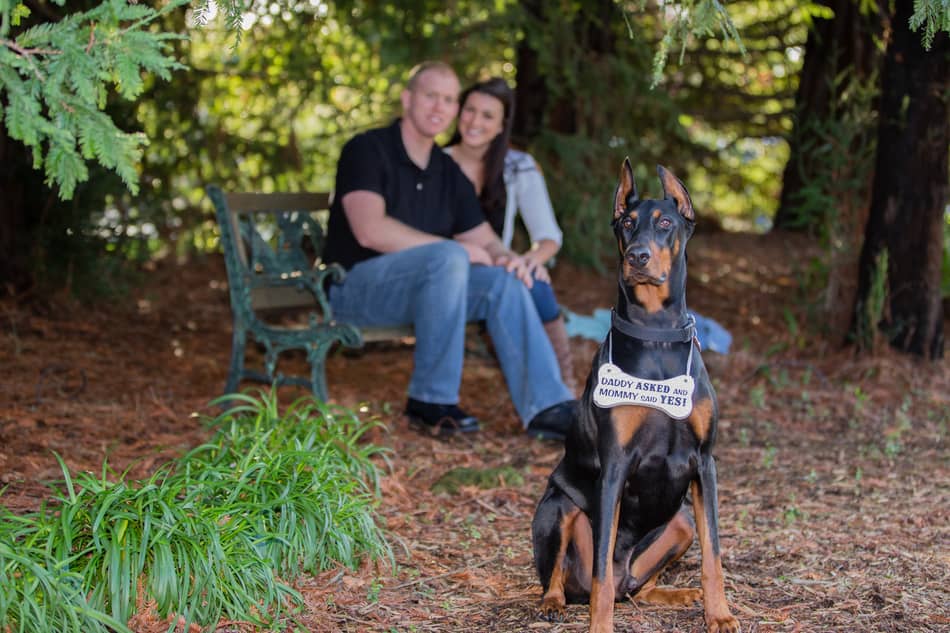
Choosing the Right Doberman — Which is better?
The right Doberman is the one that you believe will mesh the best with the environment you intend to bring it into. A dog whose temperament is a good fit for you should be your top priority. Since, like people, every dog is different and possesses its own temperamental characteristics, regardless of their genetics, each potential puppy that you’re considering should be evaluated to determine if they’ll be a good fit for you and your family.
Although I strongly believe the individual dog you pick is far more important than whether you pick a European or American Doberman, below is a good starting point to help you zero in on the right dog for you.
A European Dobermann might be best if you…
- Have an active family and want a dog to join a lot of family outings.
- Are an experienced dog owner.
- Want the best guard dog possible.
- Like a larger, more powerful looking Doberman with visible muscle mass.
- Want to compete in working dog events, protection events, join search and rescue organizations, etc.
An American Doberman Pinscher might be best if you…
- Have a tight family environment and want a dog that sticks close by your side.
- Are an inexperienced dog owner.
- Value a dog that can read human emotion well.
- Love the beauty of a refined and noble looking Doberman.
- Want to compete in breed conformation shows.
Once you decide which Doberman variant is most likely to fit your lifestyle, take the time to find a reputable breeder and then pick the specific dog from that litter that will be the best fit for your family.
For help on how to properly test a Doberman puppy’s temperament so that you can pick the one who’s the best fit for you, see my article How to Choose the Best Doberman Puppy from a Litter. This article also has a free printable puppy test worksheet that you can bring with you to help guide you through performing temperament testing on each puppy. Taking the time to pick the right puppy from a litter, instead of blindly purchasing any puppy, is critical to long-term success with your new dog.
If you are still torn about which Doberman you should be getting, let me set you at ease, I really don’t think you can go wrong. Both dogs are incredibly intelligent, loving, bond strongly to the family, and are easy to train. Both are wonderful with kids if socialized with them from a young age, and both are likely to make a great addition to your family. No matter what you choose, I’ll be here to help you through the process!
Now it’s time to choose whether you want a male or female Doberman. You may be surprised at how different they can be. To see exactly how they are different, see my article Male vs. Female Doberman: Which is Better?
Related Questions
Are European Dobermans more aggressive? European Dobermans are considered to have a better temperament for guard and protection work. While they don’t typically show aggression to their owners, they do display more drive and determination than the American Doberman Pinscher in protection dog competitions.
What is a king Doberman pinscher? The king Doberman pinscher doesn’t exist. Typically, puppies advertised for sale as “king Dobermans” are actually a cross between a Doberman and another breed, such as a Great Dane or Rottweiler.
What is the difference between a Doberman and a Doberman Pinscher? There is no difference between a “Doberman” and a “Doberman Pinscher”. These two terms refer to the same breed of dog.



Just got a doberman puppy as a rescue. Previous owner was leaving the country. She is between 3-4 months old and is a sweetheart. The person that had her before told us that she was a mini pinscher…which she clearly is not (she is currently 20-25 lbs). I don’t really care if she is purebred for our family’s purposes but it would be nice to know a little more about her. From your descriptions, she sounds like a smaller American Doberman (even has the small little white patch on the chest.) If she is about that big now, what am I looking at as far as potential size of a mature female?
I wondered if you could answer what is probably a dumb question: Her tail is not docked and her ears are floppy. We aren’t trying to win any dog shows and just wanted to make sure that these things are done on Dobermans for aesthetics alone. Any medical reasons for doing either?
We just lost our baby, he was 12 yrs old. We miss him everyday. He was our first Doberman and we feel in love with the breed. I know we will get another one but not right now. I’m looking at the two different breeds and our baby was European. He loved our family, but his person was my son vary protective of him we couldn’t hug him without him being right there in between. When it comes to breeders what should I be looking for ?
I’m so sorry for your loss Heather! I know how bad it can hurt and how the pain never fully goes away. As for working with breeders. I did a video all about that exact topic on my YouTube channel. Go to YouTube and search for “Buying a Doberman Puppy: What You Should Be Asking Breeders” and you should find it.
Your article has certainly cleared up some unknowns and explained the differences between the European and American and even that Doberman and Doberman Pinscher are the same thing- We are looking to get a female Doberman and didn’t really understand the exact differences- Your article will now help us really examine what we want and be able to make the right choice now. Thank You!
Thank you Debra I’m so glad you got the information you needed!
Thanks for the very informative article John! We have a one and a half year old male doberman that is half American, and half European, and we got a red female doberman that is 7 months old now that is 25% American and 75% European, both are AKC registered and we plan on breeding them. I got Angel when she was 8 weeks old and Walker when he was 6 weeks old. I noticed how much more calm she was than Walker, and she was more affectionate than he was, I thought it was because she’s a female. Now that’s she’s older she’s still very affectionate towards us, but towards Walker she’s much more aggressive when they’re playing to the point she bites his ears and neck and has caused him to bleed. This has just been happening recently and we thought it might be because she’s getting ready to go into heat and her hormones are changing. Walker looks more American but has alot of muscle tone but they both have been on a raw meat diet since I got them and we have a 2 acre field that we run them in every evening to get exercise before we put them down for the night (they are both kennel trained). Here is a great idea for doberman parents…..when it starts to get dark we use a laser pointer that is really bright and our dobermans chase it all over the field and boy can they run! Great way for them to run off their energy! Angel is too young to tell if she’s going to be bigger than Walker, but so far her head is much slimmer and she’s just about as tall as him already at 7 months old. I’m not looking forward to keeping them apart when she goes into heat. Ugh!
I loved the European vs American video. I would be curious to know your take on cropping and docking. Do you have a video discussing the advantages and disadvantages of each practice? And does either practice harm or help when considering European vs American?
Thank you so much Shanah! I’m really glad you enjoyed the video. I definitely want to do a video about cropping and docking, and that’s on my list of “to-do” videos for the near future. I don’t think there are any notable differences in doing these procedures on an American or European Doberman. I’m personally not against doing either, but many people are. It’s a hotly debated topic though and just so much to go into. It definitely warrants it’s own article and/or video dedicated to the topic.
please tell me how to identify the two kinds when they are puppies.. replying soon will be of great help since a new pup will be arriving next week
It’s pretty tough to identify them as puppies. Their features don’t really fully develope until they’re between 1 and 2 years of age. Sometimes though you can see a difference in their muzzle even as puppies. Try looking for the thicker European snout. Otherwise, you might just have to wait until they grow a bit to get a better idea.
Thank you it was very helpful I never knew the different types of Doberman Pinchers and they’re temperament American Dobermans are more a family dog but also will protect their owners.Plus the ;1 year old expenses very good information and knowledge over all
Thank you so much Geraldine, I’m so glad you were able to get something useful from it all! Both American and European dogs are GREAT dogs. Both are very protective and both can do well with families.
Great site! Our dobe red dobie, Flame, is a mix of European and American. Had him for 7.5 years now, and everything you mentioned is spot on! It’s why we bought him. Wanted a big family dog that will protect us, yet would not harm us. After lots of reading a Doberman was our choice. I’m alpha and I do not need a leash with him, but since he was young he always chooses my wife to get in front of when he hears noises outside the door. In fact a month ago, a loose sheppard was following my wife walking Flame and a friend and her dog. The Sheppard got too close to them and Flame bolted after it chasing it down the street, then he stopped, turned around and trotted back to my wife and her friend. I prefer him to not be in a room so he can protect the home. In the summer when no son is down in lower level room he sleeps outside our door or on the stays. Yes, he usually sleeps facing the door or steps. All the neighbors know who he is and love him. Friends love to babysit him, because he is so well behaved. One friend got freaked out when he came up to her face while she was lying in the couch and just stared into her eyes. She said,”I thought he was gonna eat me.” I was like he wants attention when he does that. either take me out or love on me. We got him when I had a 3, 8,9, and 13 year old. So we can say my boys grew up with him. While he gets on my nerves when trying to watch TV and goes crazy when the doorbell rings, I know that’s his job. After this I do not want another dog, as I will get too busy, but if I did it would be another dobe.
That’s so great that your kids have Flame around to grow up with! Thank you so much for sharing. Yeah, it’s pretty funny for me when I wake up to my dog staring at me wanting to play. Haha. Other people don’t understand that stare.
would an American Doberman be a good guard dog for an inexperienced dog owner and a single person living alone?
Definitely! An inexperienced dog owner will do better with an American. Also, most American Dobermans are a bit more in touch with their owner’s emotions which is a plus. Just because the Europeans have a reputation for being a bit better on the guard dog side of things doesn’t mean the American will not have the protective instincts. They certainly will! Good luck. For what it’s worth, I don’t think you could make a wrong choice here.
very good great help for me thanks
Hi John
I’m looking at buying a male Doberman from Beshara Kennels in Jacksonville Fl. They are European line dobermans and big. The current mother and father are 90lbs and 125lbs respectively. The kennel is not part of AKC. What pointers can you give me?
The best thing I can say is to make sure that you establish yourself as the alpha from the beginning. Europeans need clear, firm direction. Nothing harsh, just clear direction and for them to know you are in charge and make the rules. Also, (sorry if I repeat myself from my website) but socialize as much as possible, especially early on. Bring them around large groups, kids, other dogs (etc.) when they are young so they are easy-going adults later on. You just can’t socialize too much. Good luck!
Are Dobermans good running partners?
I’m looking for a dog that I can take running.
Doberman’s are great running partners (either variety)! Just make sure not to take them for long runs until they’re at least 18 months of age (2 years old is best). Their joints aren’t developed enough until then and it could cause serious damage. But yeah, they can run very fast for quite long distances. Check out my article How Fast Can a Doberman Run? 6 Speed Clocked Dobermans.
American dog is enough for family protection???
They certainly can be, yes!
Is American doberman a guard dog??
They certainly can be a great guard dog, yes! But the European Doberman is said to have more of those traditional temperamental traits that made the breed so good at guard work originally.